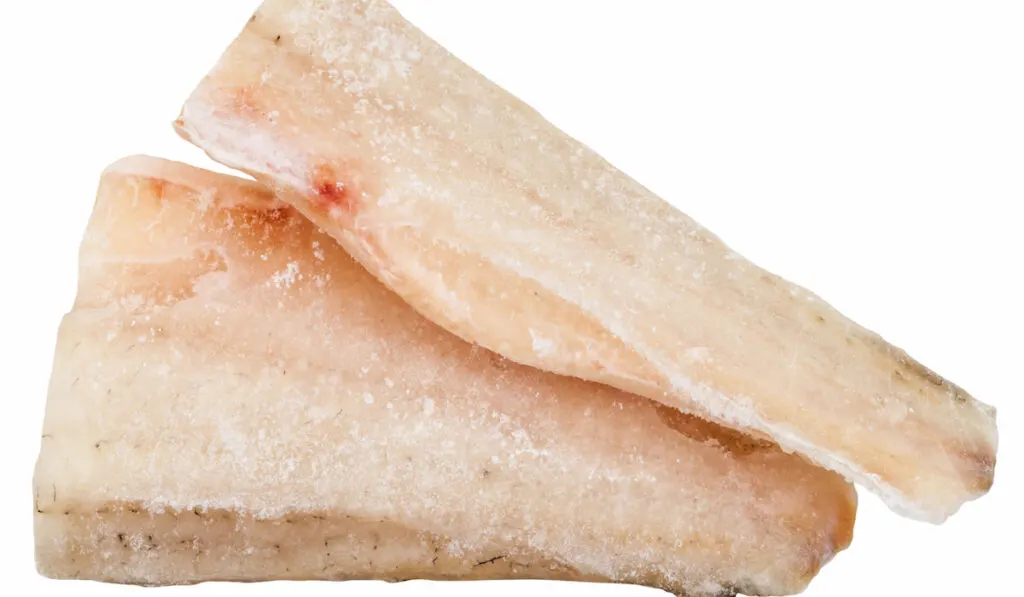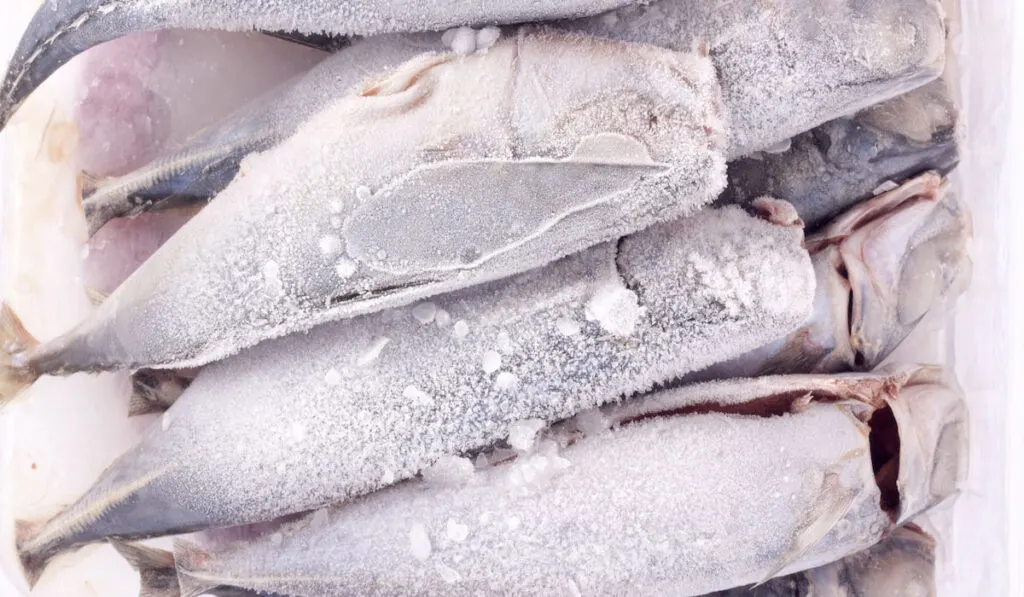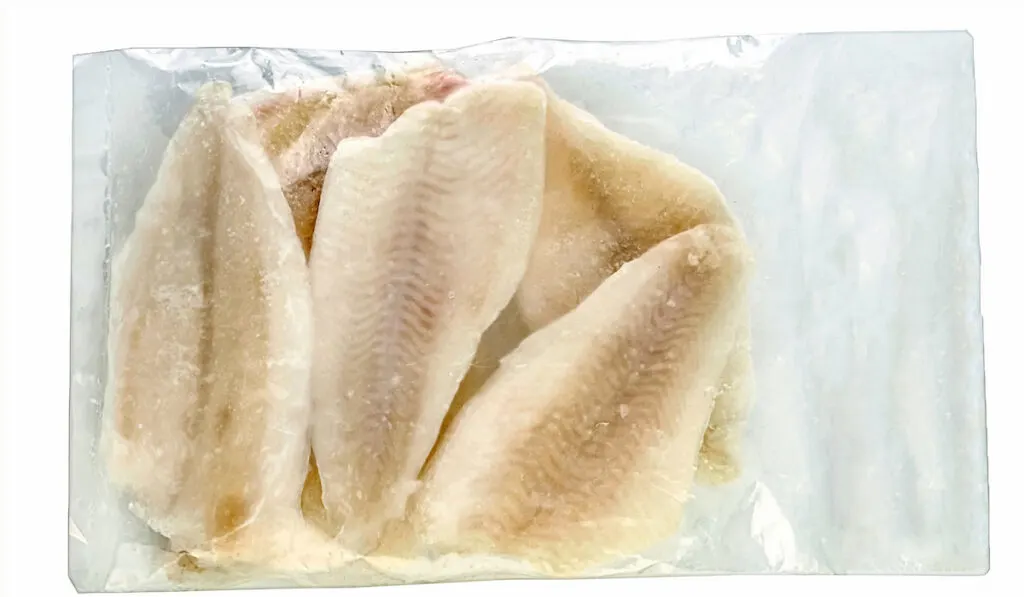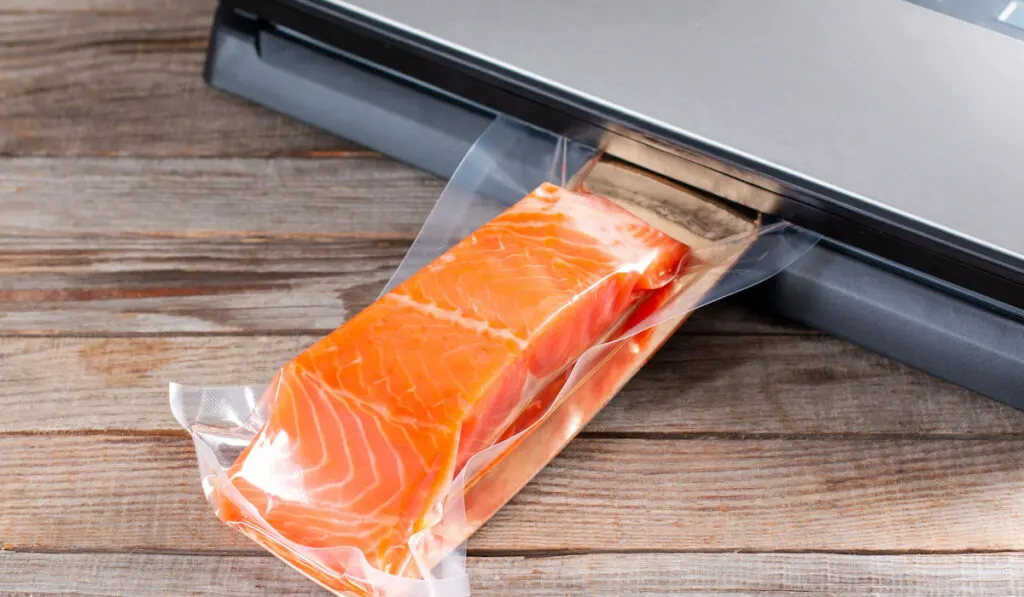Buying frozen fish from the grocery store can be tricky, especially if you’re not sure of what to look for.
While it’s easy to tell if fresh fish is spoiled by its odor and texture, sometimes it can be challenging to determine if frozen fish is still safe to consume.
Our detailed guide lists some signs to look out for that indicate frozen fish has gone bad. We also delve into how long frozen fish lasts in the freezer and list some of the safest methods to freeze fresh fish if doing it at home.
Table of Contents
How Long Does Frozen Fish Last?
The typical storage life of frozen fish is six months. However, you need to note that the storage life of frozen fish depends on the fish variety.
For example, fatty fish like salmon, mackerel, and herring retain their quality for 2-3 months in the freezer due to their high-fat contents.

You may notice that their texture will be different past the three months. That doesn’t mean it’s not good to consume, but the taste will be slightly different.
Other varieties like red snapper and tilapia can last up to six months in the freezer.
Fish doesn’t spoil in the freezer, its quality declines. It’s best to use frozen fish within a few months after freezing it. Alternatively, you can still use frozen fish in a way that hides any changes in texture and flavor.
What Other Factors Affect Frozen Fish’s Shelf Life?
Apart from the type of fish, other factors determine how long fish stays fresh in the freezer.
Type of Freezer

A quality freezer should maintain a zero-degree Fahrenheit temperature.
Additionally, if you have a frost-free freezer, the time your fish stays in the freezer must be reduced. Otherwise, it will go bad. That’s because these freezers raise the temperature to ensure ice doesn’t form within the freezer.
The lack of steady temperature reduces frozen fish’s shelf life and quality.
Packaging
How you choose to freeze your fish can also impact its storage life if you freeze your fish in a container that’s not airtight or in a bag that allows air to leak inside.

How Can You Tell if Frozen Fish Has Gone Bad?
Some of the signs that indicate frozen fish has spoiled include the following:
Lightweight
If you notice that the frozen fish is lighter than when you placed it in the freezer, that shows moisture evaporated from the fish. Although the fish is still safe to consume, it might be challenging to eat when cooked.
Gray or Whitish-Brown Patches

Another indication of spoilage is grayish or whitish-brown patches on the edges of the fish. The patches may also appear on the surface, showing that the fish dried out.
In this case, you may have to discard the fish.
A Strong Odor
After thawing, a sight smell or fish that produces an ammonia-like odor should be thrown away.
Slimy Texture
You should also discard fish with a slimy texture on the surface. That indicates the growth of bacteria that could lead to food poisoning.
Ice Crystals

When buying frozen fish, look out for ice crystals on the fish. That shows the fish was exposed to above-freezing temperatures, which could have led to bacteria growth.
Additionally, it could indicate that the fish was thawed and refrozen. The moisture formed during thawing leads to the formation of ice crystals.
However, ice crystals may or may not be a bad sign.
Fish frozen for a very long time could also have ice crystals. Although this doesn’t show that the fish is unsafe to consume, you’ll notice the difference in quality and texture after cooking it.
Discoloration

Any color change or darkening is a sign of spoiled, frozen fish. Good quality fish should have a uniform shade throughout.
Off-color patches or discoloration could indicate that the fish experienced freezer burn or that it may have begun rotting by the time it was frozen.
Can You Eat Frozen Fish After the Use-By Date?
Research by the USDA shows that you can still consume frozen fish after the use-by date. The fish remains safe to eat.
However, over time, you may notice that the fish will lose its texture and flavor, which is why the USDA recommends consuming frozen fish within 3-8 months after freezing.
According to Eat By Date, most fish varieties can last in the freezer for 6-9 months, apart from herring and smoked salmon, which last from 3-6 months.
What’s the Best Way to Freeze Fish?
You can freeze fish using a vacuum seal, freezing with water, or using an ice glaze.
When buying fish from the market, it’s best to transport it in an airtight bag or container to avoid exposure to warm air temperatures.
Freezing in Water
To freeze fish in water, rinse it in salted ice water to preserve the flavor and prevent it from breaking apart. Fill a freezer bag or container with water and place the fish inside, ensuring it’s submerged.
Seal the container or bag tightly, label it, and put it inside the freezer.
Ice Glaze
The second method involves using an ice glaze.
Place the fish in the freezer on a platter. Dip the fish in freezing ice water after it’s frozen. Put it back in the freezer for some minutes to harden the ice.
Remove the fish and repeat the process until a layer of ice forms. Fold the fish in vapor-resistant paper and place it back in the freezer.
Vacuum Seal

You can also vacuum-seal fresh fish.
Start by placing fish wrapped in cling film in the freezer for a few hours. Remove the fish once frozen and place it in a freezer bag for the vacuum sealer.
Vacuum seal the package and label it. Put it back into the freezer.
Pre-freezing the fish prevents it from getting damaged when vacuum sealing it.
We recommend vacuum sealing for anyone who freezes lots of fish — vacuum sealing can preserve fish for nearly two years.
Ideal Freezer Temperature
The recommended freezer temperature is below 0°F or -18°C to prevent bacterial growth and decomposition.
Final Thoughts
While frozen fish can last up to six months, certain fish varieties like salmon and mackerel can only last for three months. Consuming frozen fish past its due date won’t make you sick immediately, but you might notice a change in flavor and texture after cooking it.
However, if you see that the fish has a strong ammonia-like odor, dull color, and a slimy texture, you should throw it away.
Resources
- https://ask.usda.gov/s/article/What-is-freezer-burn
- https://www.fda.gov/food/buy-store-serve-safe-food/selecting-and-serving-fresh-and-frozen-seafood-safely
- https://www.ehow.com/how_5872826_tell-frozen-fish-gone-bad.html
- https://www.fda.gov/food/buy-store-serve-safe-food/selecting-and-serving-fresh-and-frozen-seafood-safely
- https://www.leaf.tv/articles/how-long-can-you-keep-frozen-fish/
- https://www.eatbydate.com/proteins/seafood/fish-shelf-life-expiration-date/
- https://thewholeportion.com/can-out-of-date-fish-make-you-sick/
- https://www.forkandspoonkitchen.org/how-long-does-fish-last-freezer/
